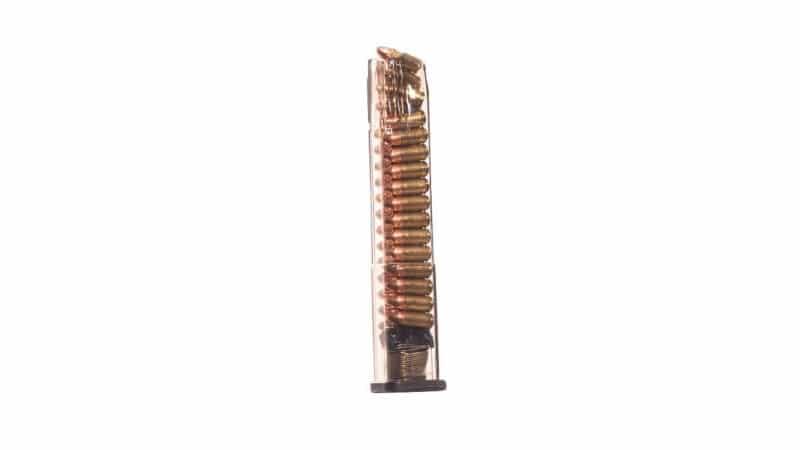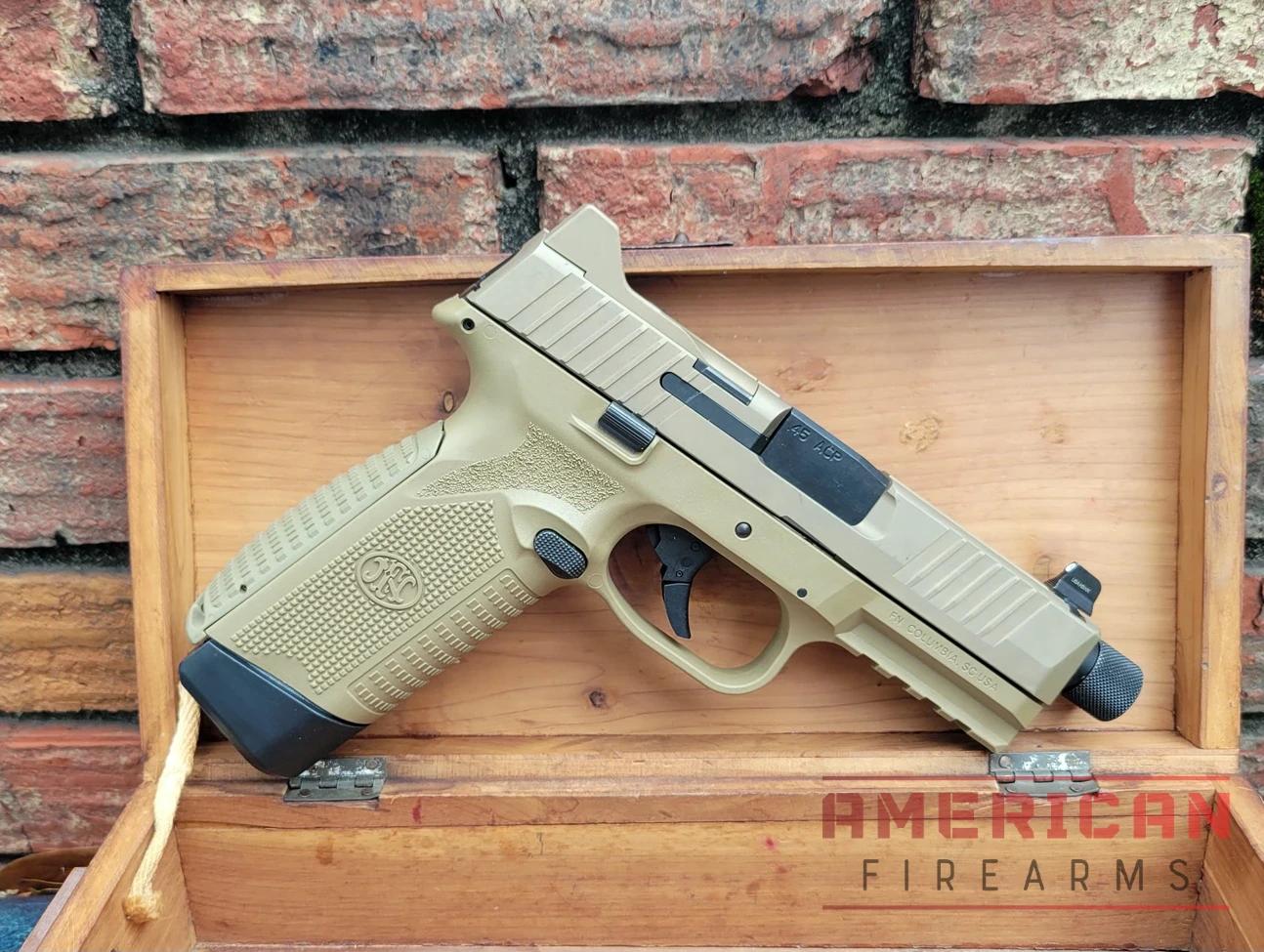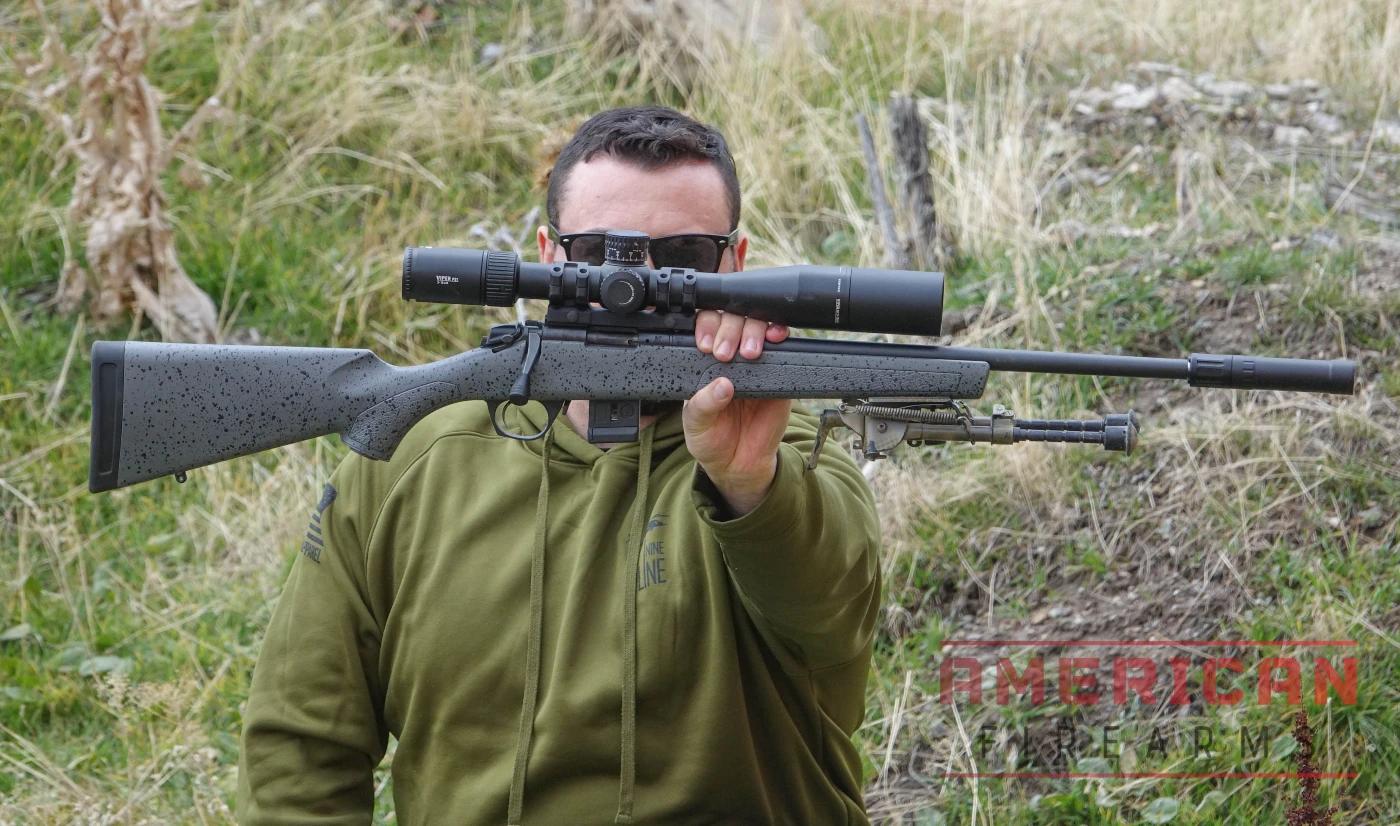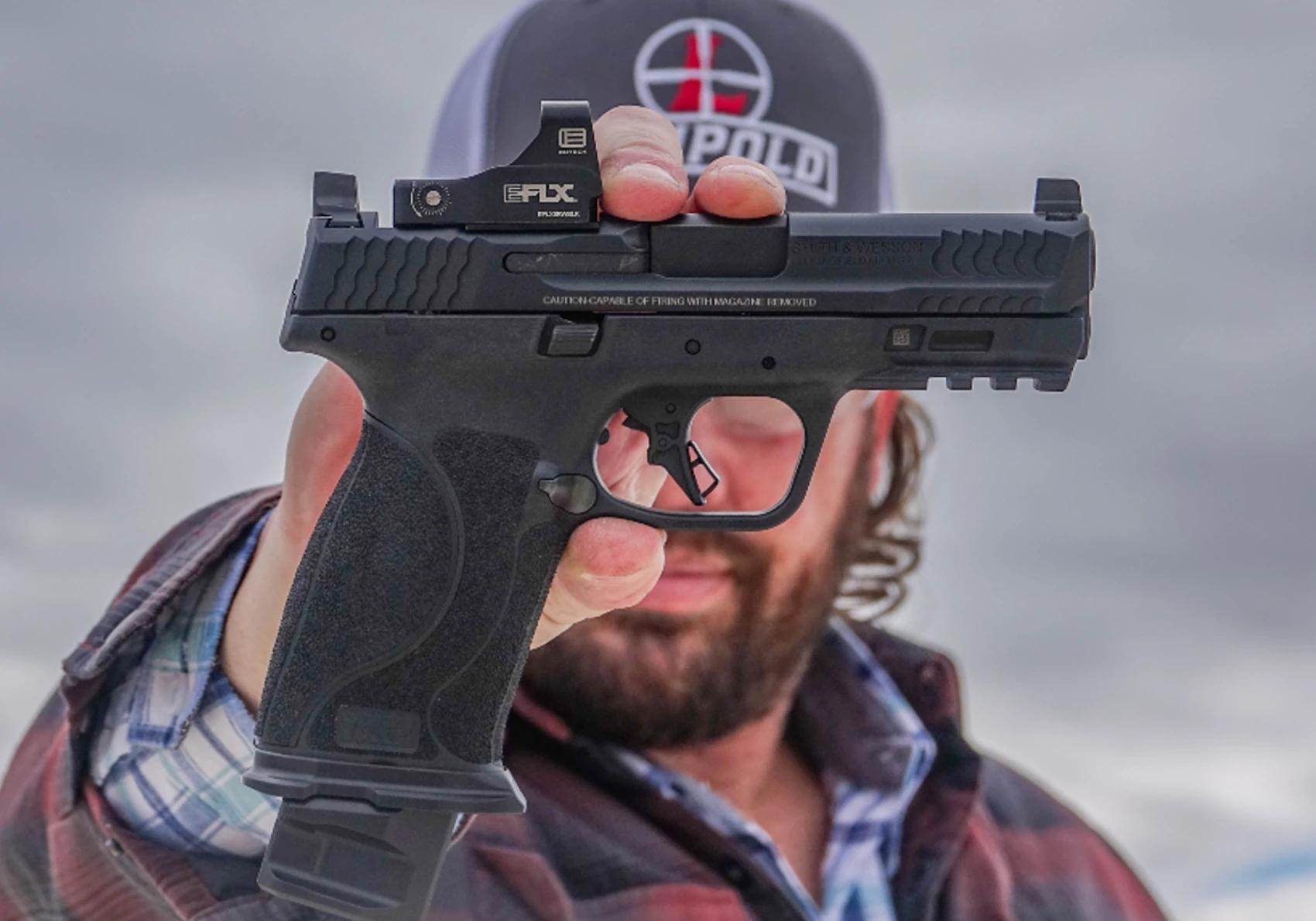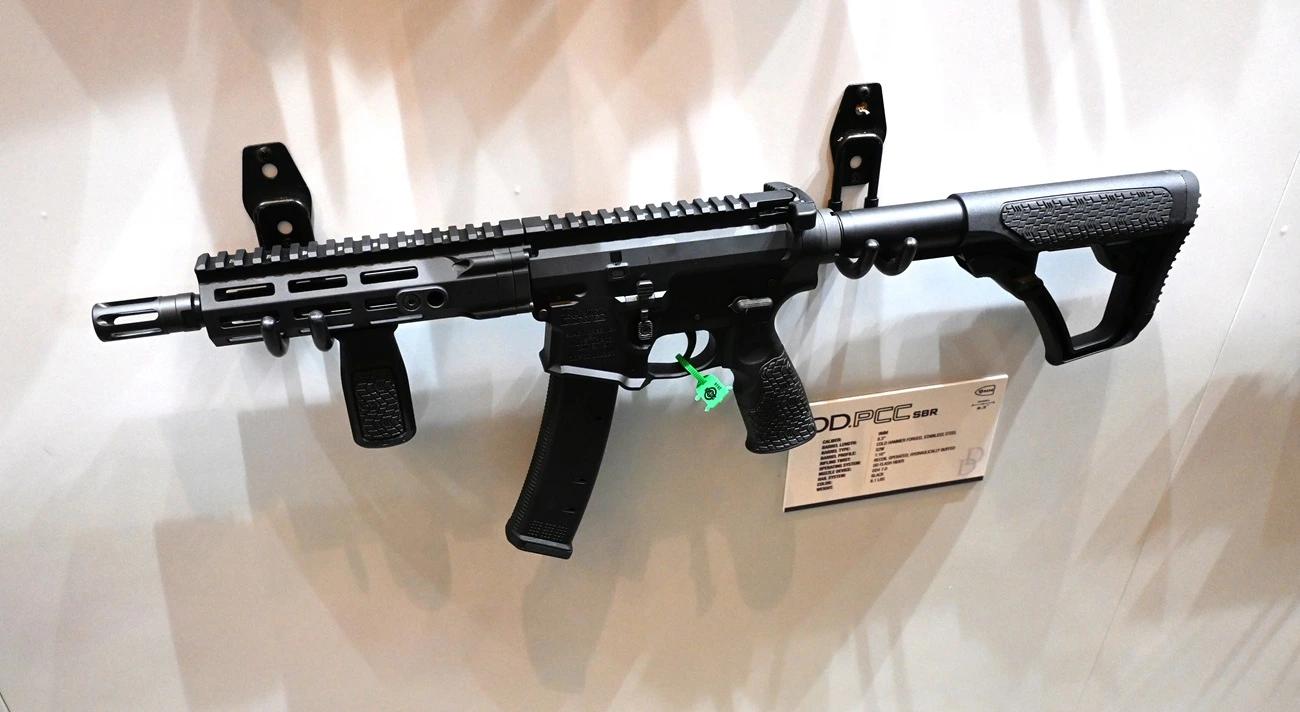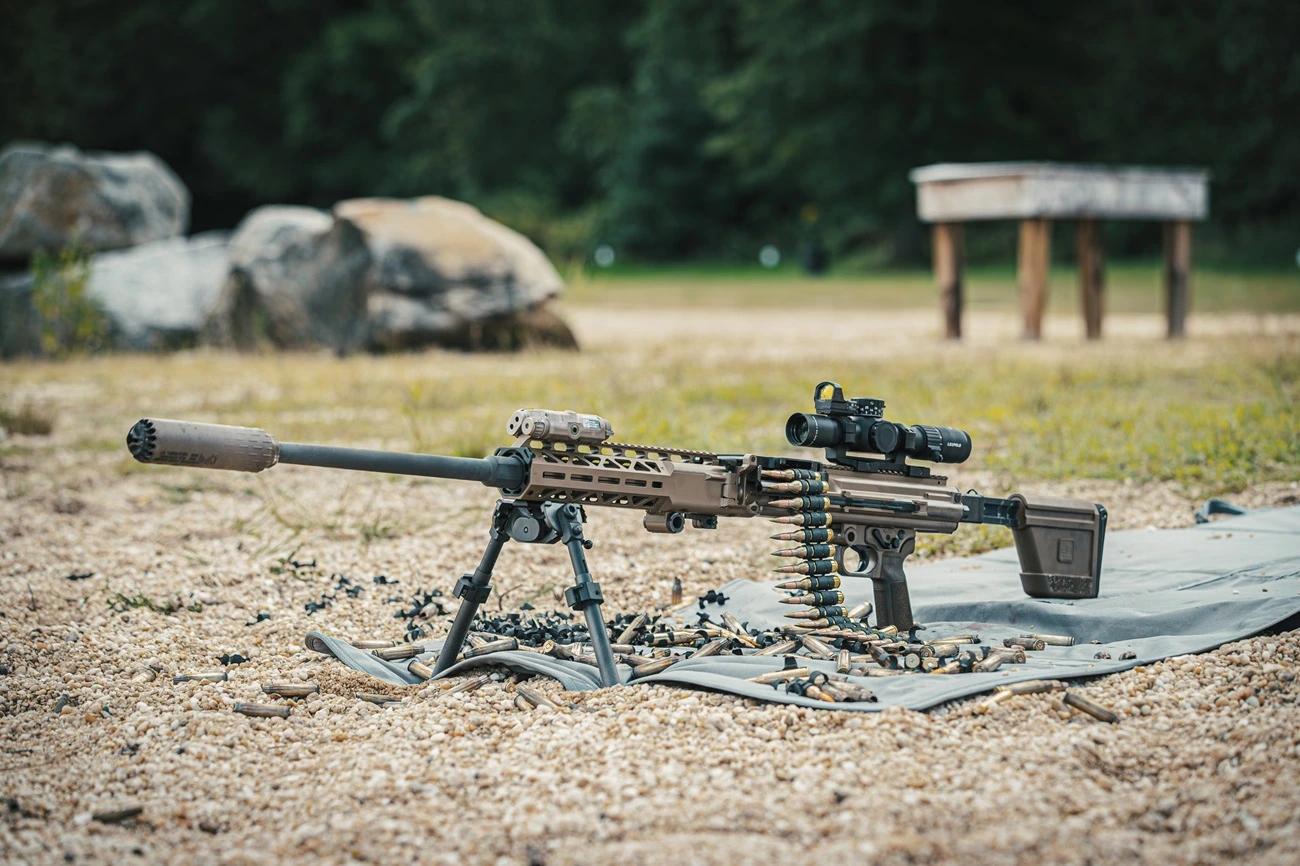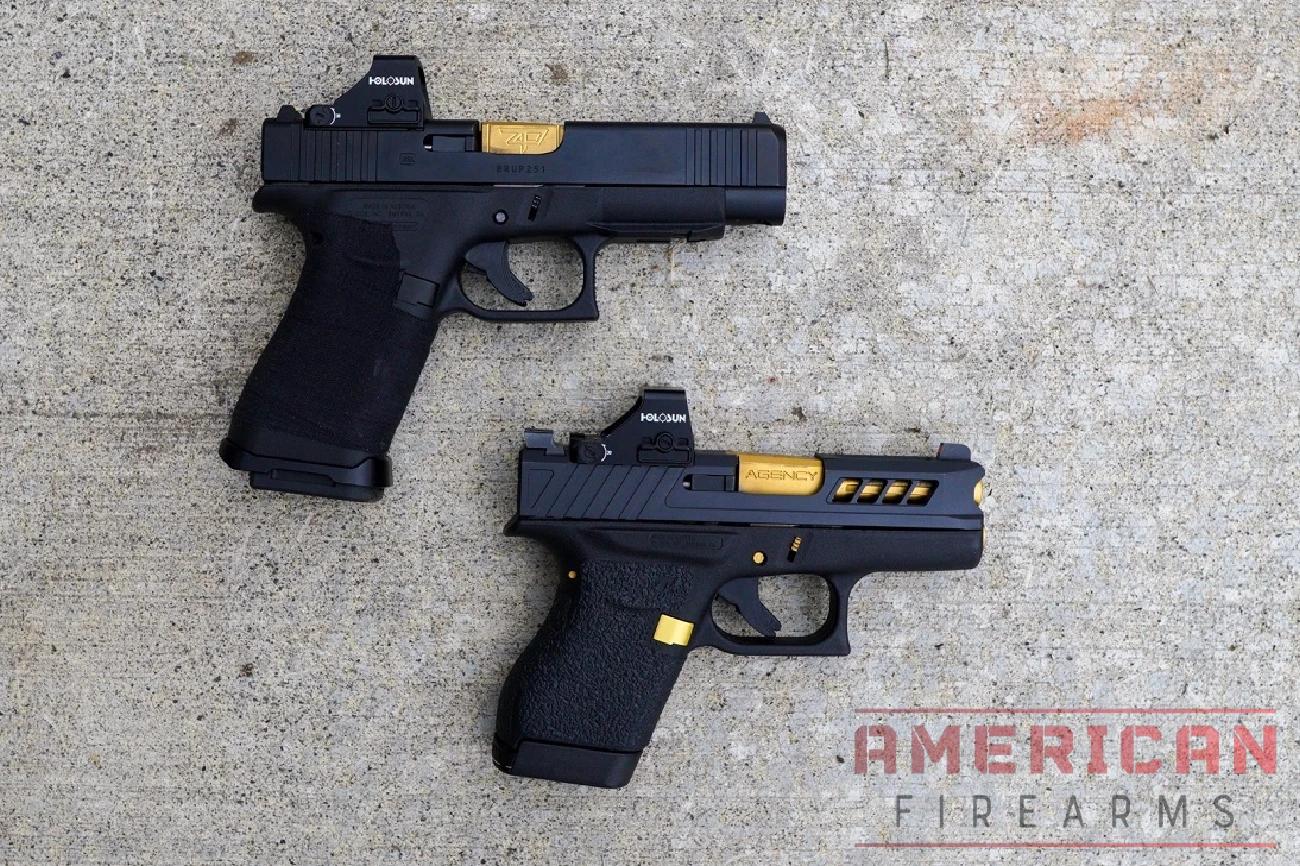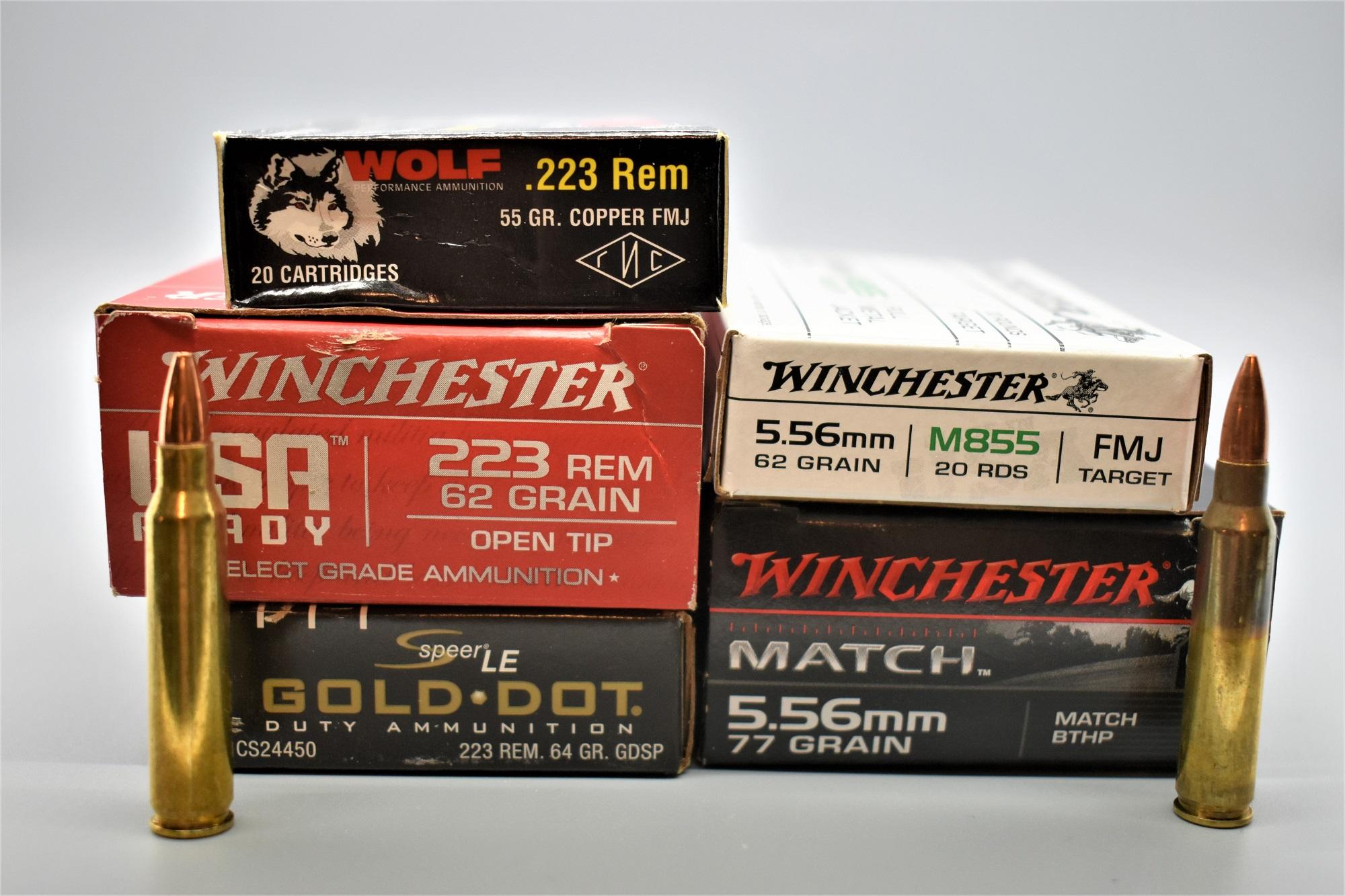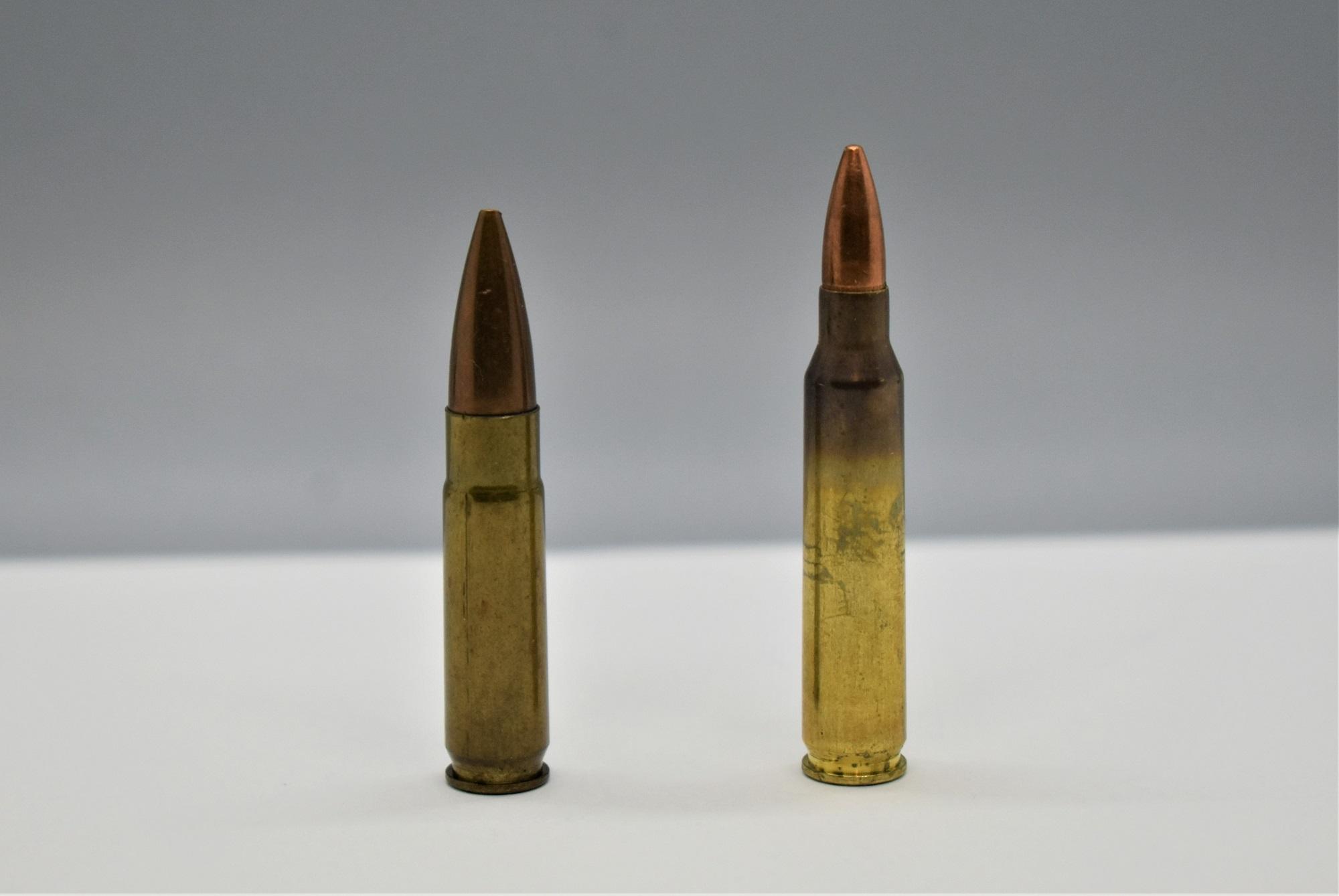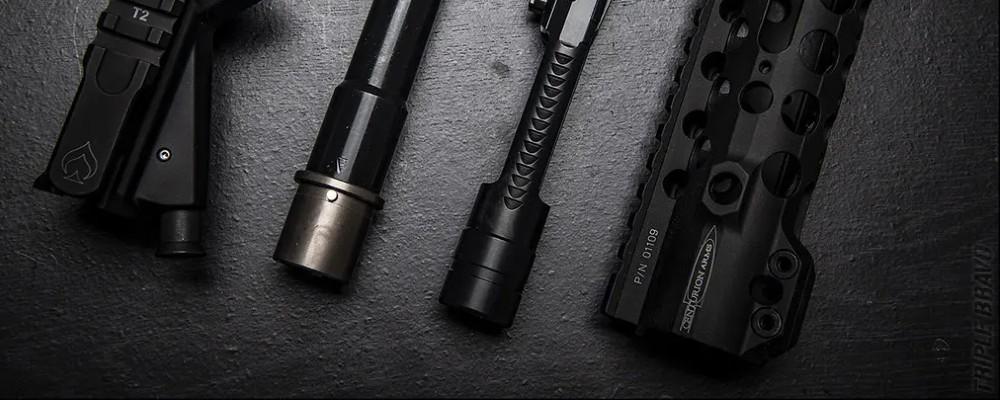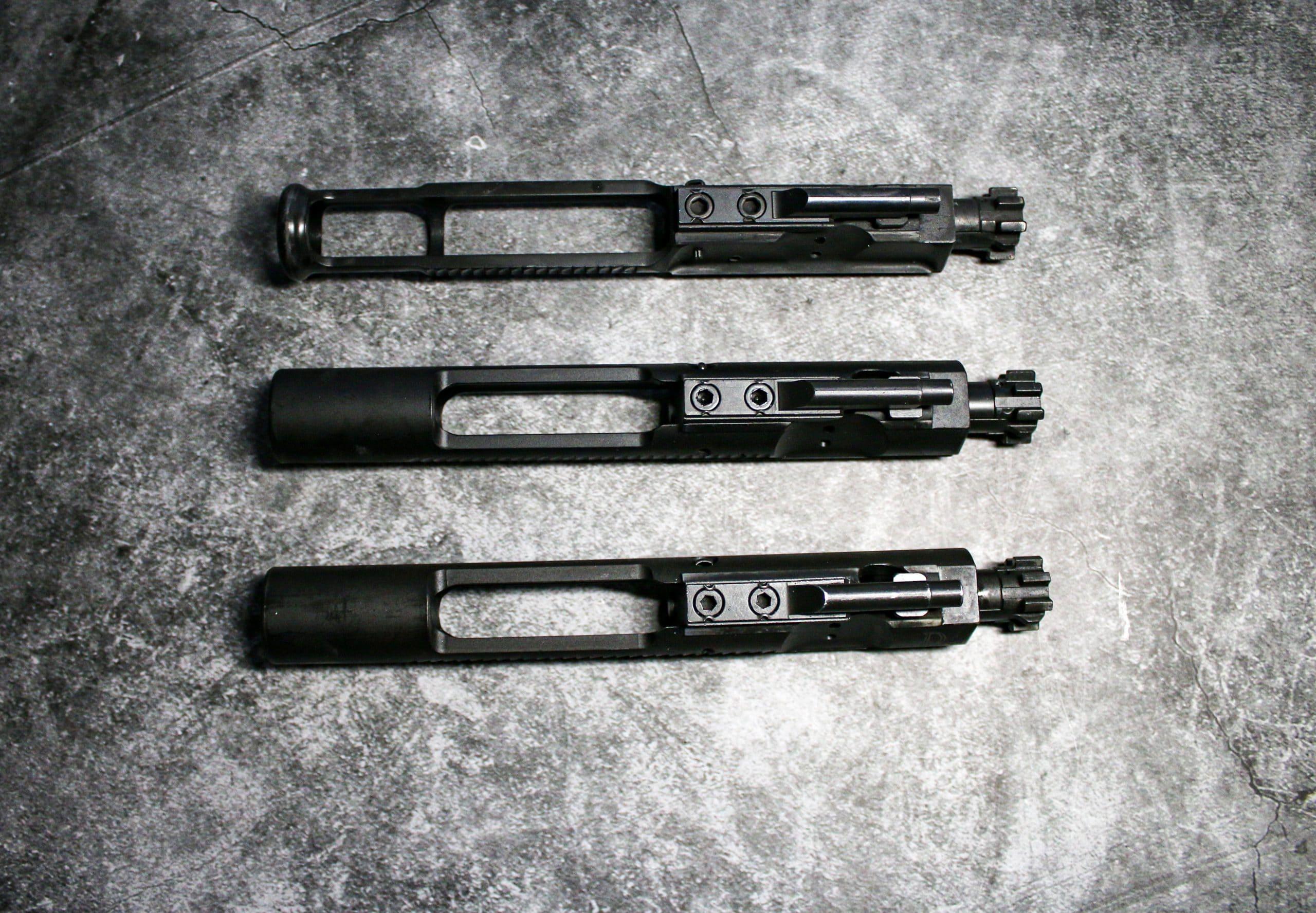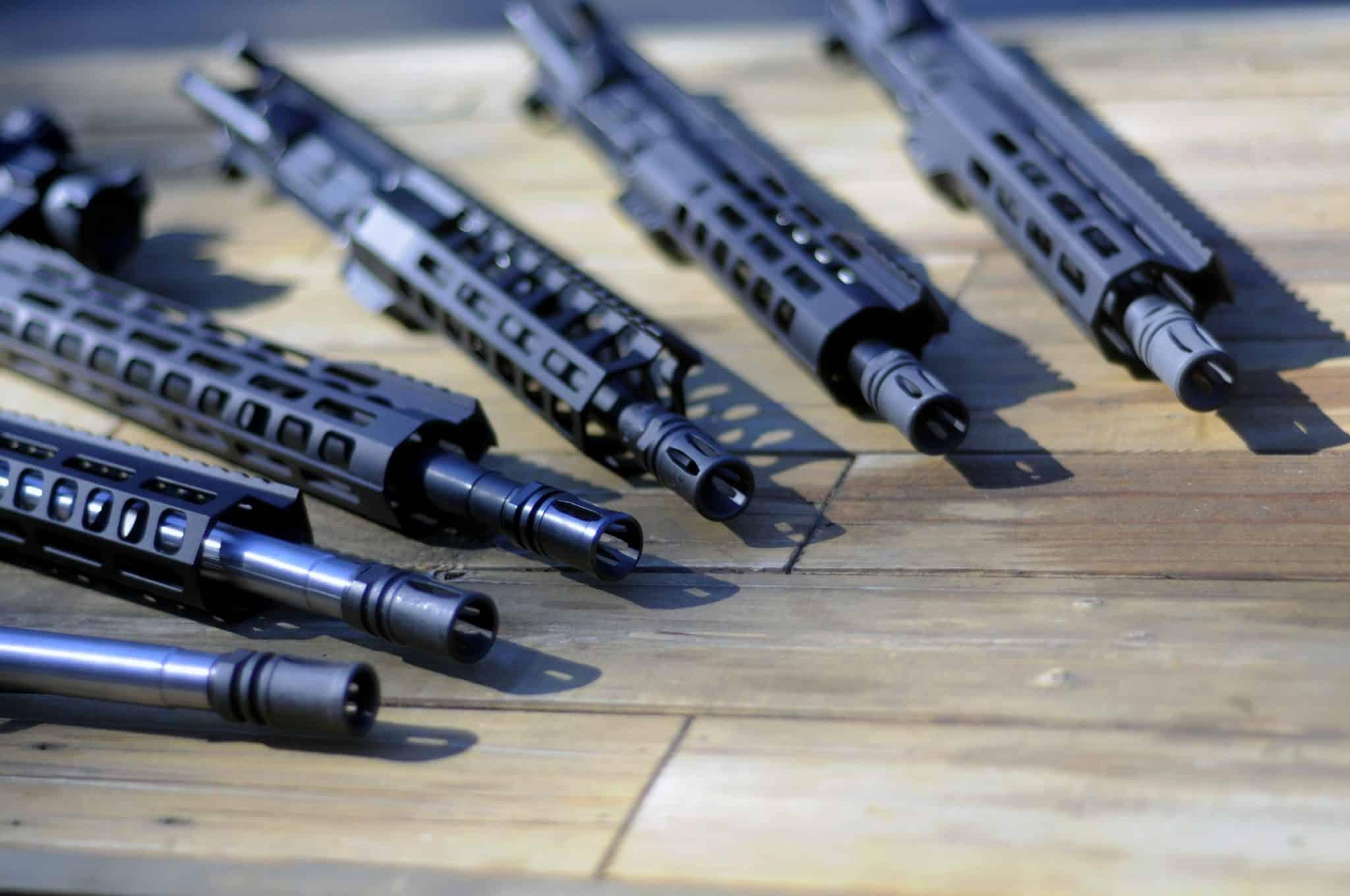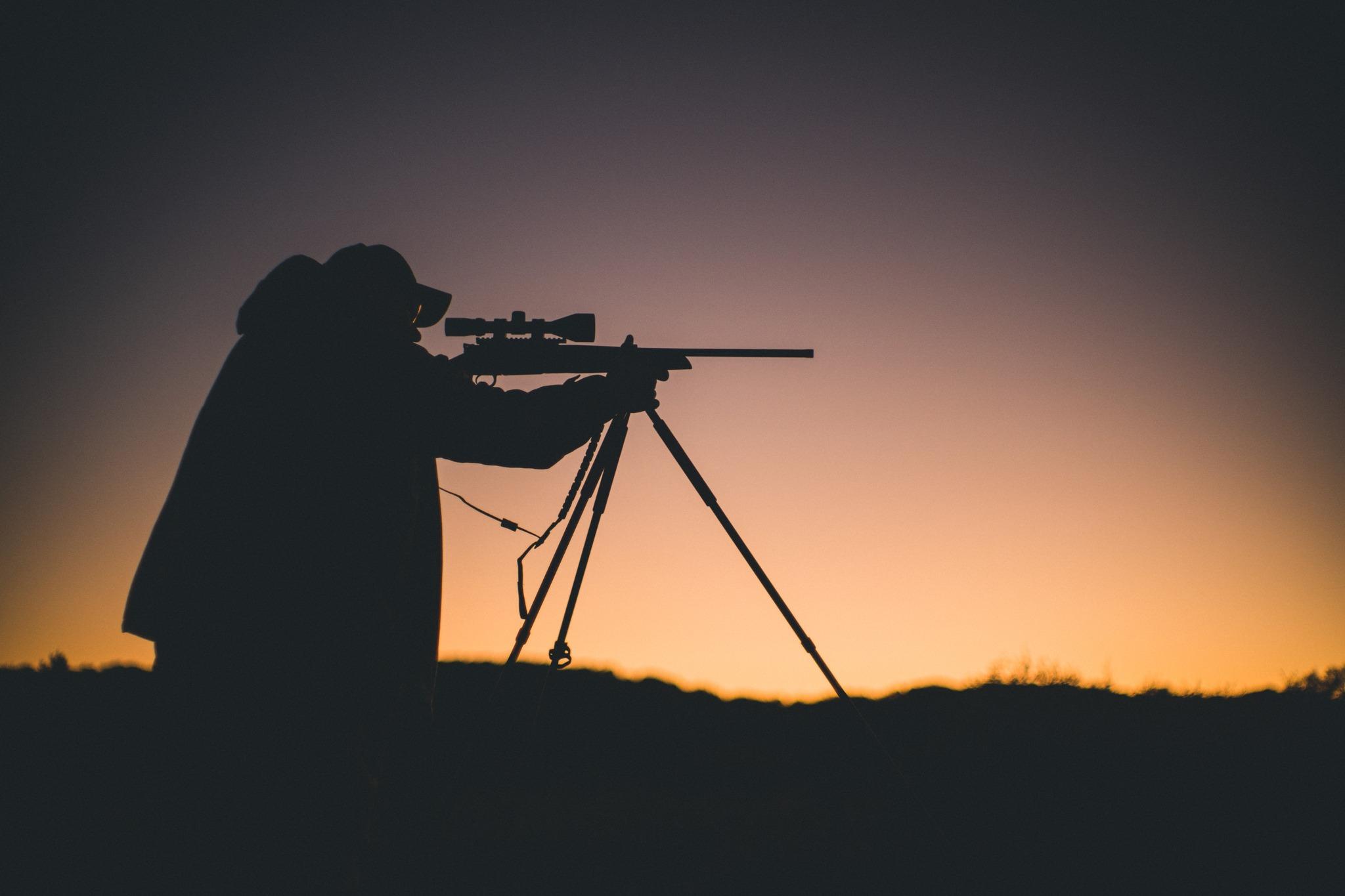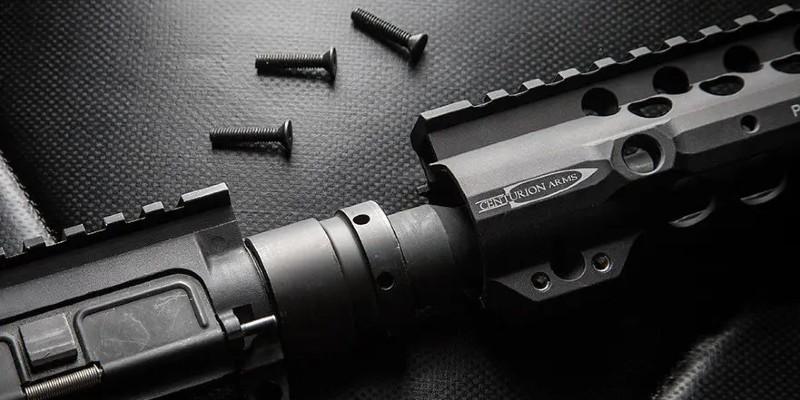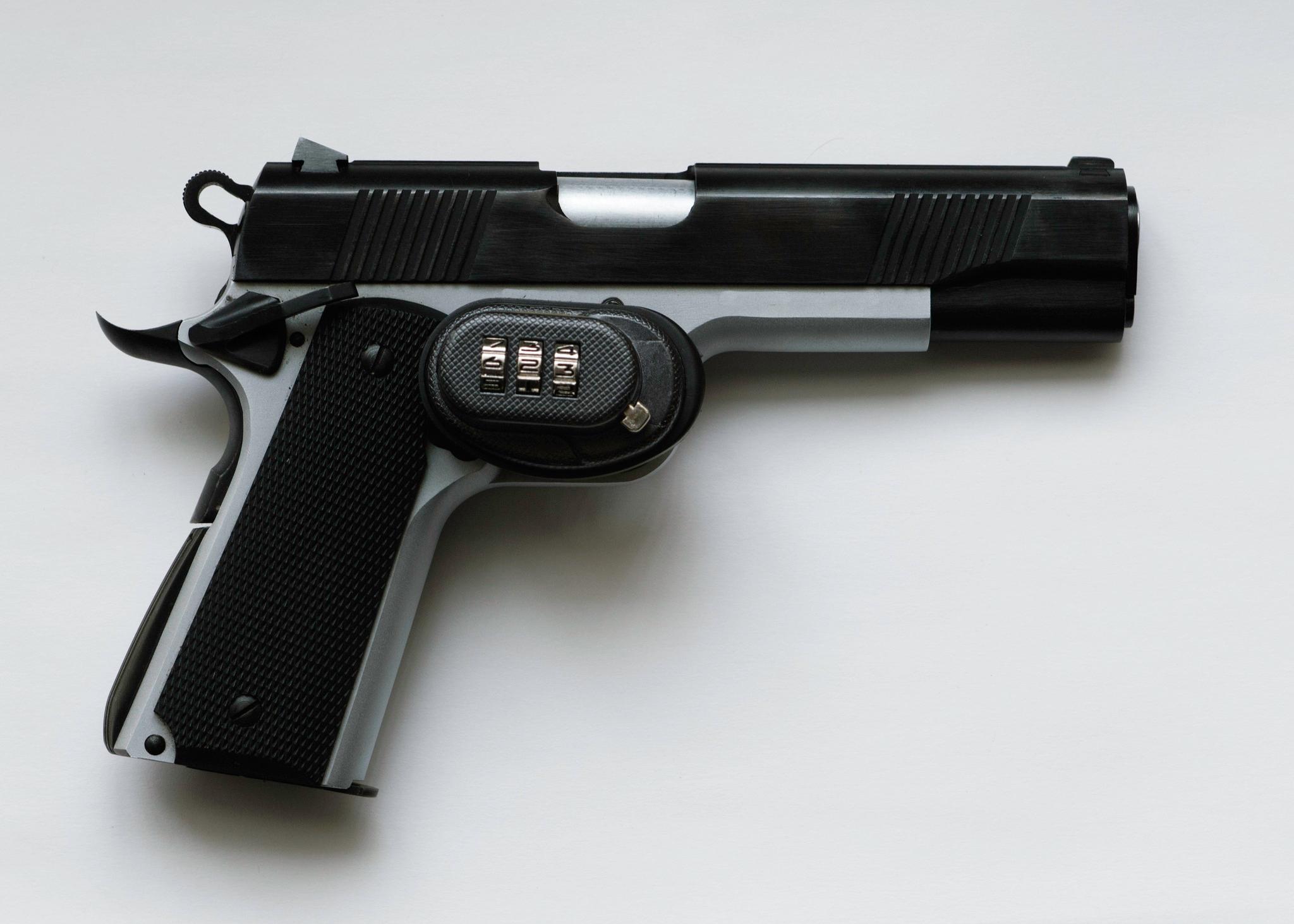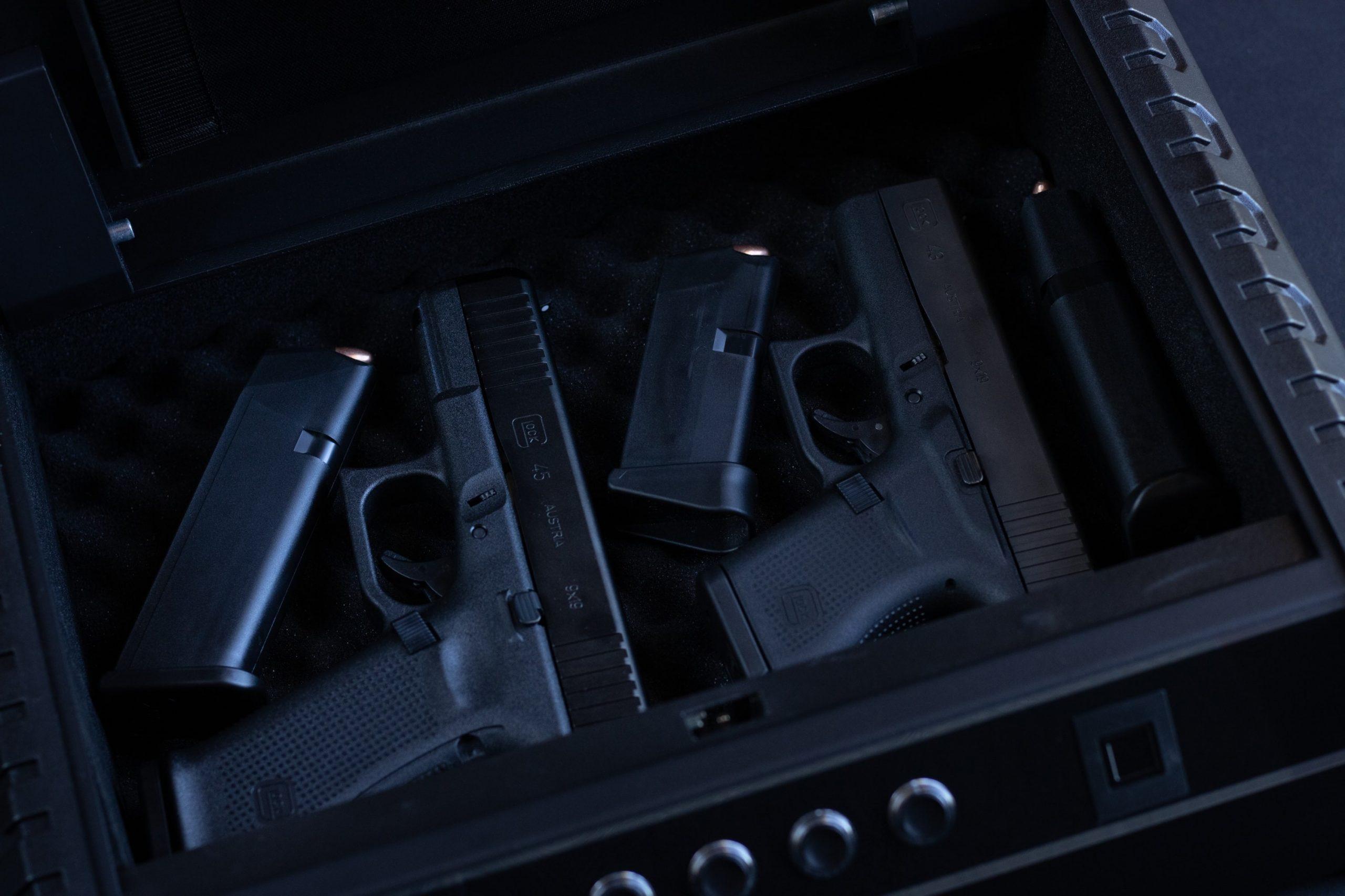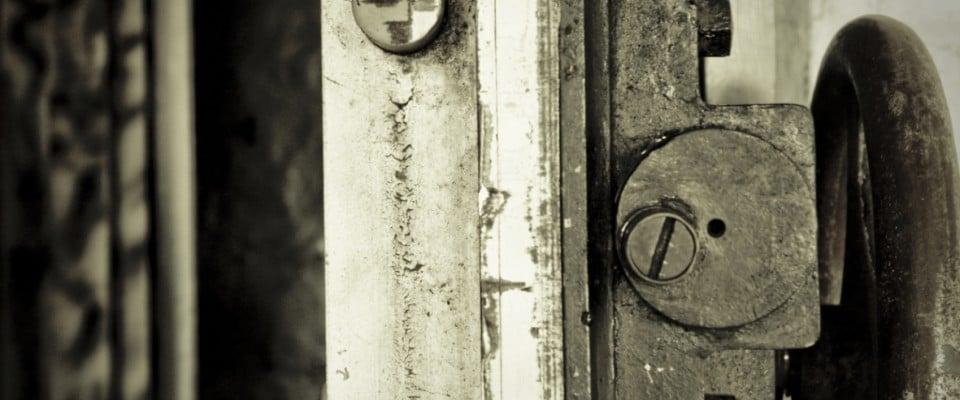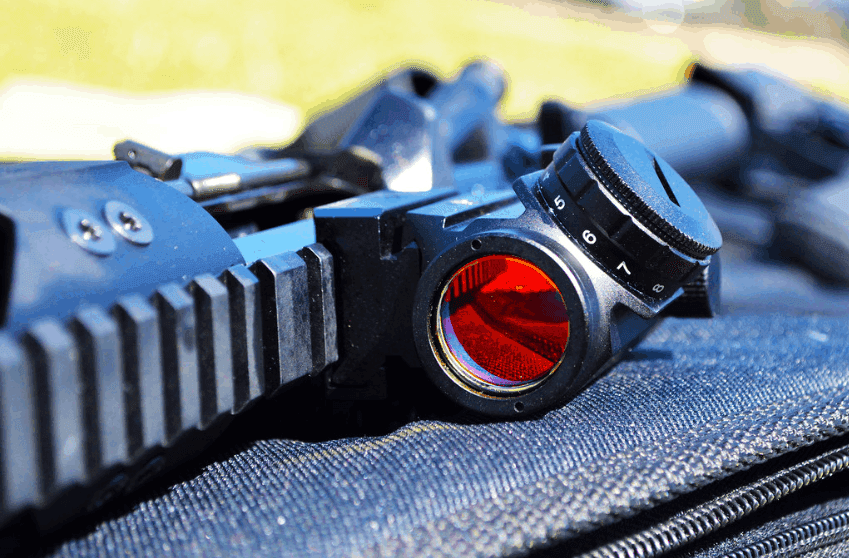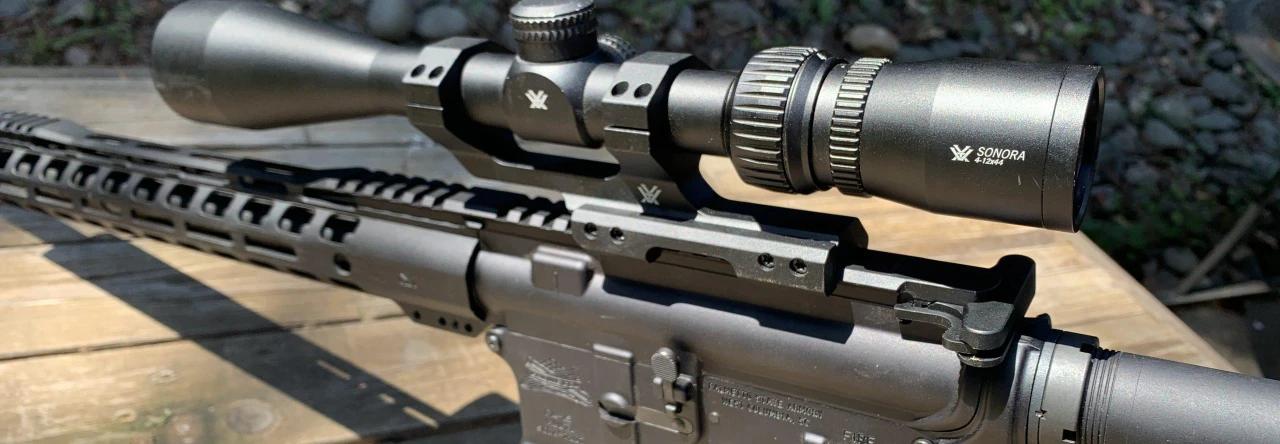In-Depth Review: M&P Shield 2.0 Compact [Hands-On]
Written By
Michael Crites
Licensed Concealed Carry Holder
Reviewed by
Editorial Team
Learn About The Editorial Team
Share:
Products are selected by our editors. We may earn a commission on purchases from a link. How we select gear.

Updated
Dec 2023
Is Smith & Wesson’s second-generation M&P Compact one of the best polymer-framed handguns on the market today?
I put this striker-fired pistol through its paces and help you determine if this affordable 9mm is right for you.
In This Article
Overall Score

$459.99

55
EXCEPTIONAL
Performance Scores
Our Verdict
The S&W M&P M2.0 Compact is very close to being perfect when it comes to a modern “do everything” combat handgun.
It is small enough to carry comfortably either openly or concealed when using the proper holster and technique while proving large enough to have a long enough sight radius to provide practical accuracy at realistic self-defense ranges at 25 yards and under.
A rock-solid reliable pistol in testing that can carry weapon-mounted lasers and lights as well as accepting extended capacity magazines, it stands ready for home defense.
In short, Smith’s mid-size Compact 9mm is an easy choice for a dependable modern handgun that is affordably priced and is (almost) a “Glock killer.”
Test Scores
How does the S&W M&P 2.0 Compact score on our 60-points scale?
Accuracy: 9/10
Exhibits solid accuracy with consistent performance in various shooting conditions, distances, and ammo types.
Ergonomics: 9/10
Offers a comfortable and customizable grip, with features that cater to a wide range of hand sizes and shooting preferences.
Features: 9/10
Includes a comprehensive set of modern features like an extended stainless steel chassis, modular grip frame, and durable combat-style sights.
Fit & Finish: 9/10
The Shield has excellent craftsmanship with an even and durable finish, reflecting the attention to detail you can expect from Smith & Wesson.
Reliability: 10/10
Exceptionally reliable, even with extensive testing and various ammunition types.
Value: 9/10
The Shield 2.0 provides great value for its price, balancing quality features, reliable performance, and affordability.
Specifications
Caliber: | 9mm Luger | |
Action: | Single action striker-fired | |
Capacity: | 15+1 with flush-fit magazines / optional 10- and 17-round factory mags | |
Barrel Length:, 4 inches | ||
Overall Length: | 7.25 inches | |
Overall Height: | 5 inches (with a 12-round magazine) | |
Overall Width: | 1.3 inches over the thickest part of the frame | |
Grip frame: | Polymer with steel slide rail inserts | |
Weight: | (with an empty 15-round magazine) 27 ounces | |
Weight: | (test gun loaded with 16 147-grain JHPs) 34.5 ounces | |
Sights: | Steel white three-dot style. Fixed front / windage adjustable rear. | |
Slide: | Stainless steel with a black Armornite durable corrosion-resistant finish | |
Barrel: | Stainless steel with a black Armornite durable corrosion-resistant finish | |
Safeties: | Firing pin block | trigger safety insert lever / loaded chamber indicator (LCI) / optional manual safety. |
Evolutionary History
Smith & Wesson has been around since 1852, making them among the oldest of American firearm makers, a hallmark only bested by Remington’s circa 1816 claim. However, while Remington has been all over the place when it comes to offerings, S&W has always been known and revered for their well-made and innovative handguns.
Smith’s first semi-auto centerfire pistol, Charles Clement’s Model 35, appeared on the market in 1913 chambered in .35 S&W Auto.

Their first successful 9mm– and the first accepted American-made pistol in that caliber– was the Model 39 which appeared when Ike was President.
The Model 39 was well-liked, even used by the SEALs in Vietnam, and led to the 15+1 capacity Model 59 by the 1970s. This evolved into S&W’s third-generation “Wondernines” of the 1980s and 1990s, which were the gold standard for law enforcement in that era.
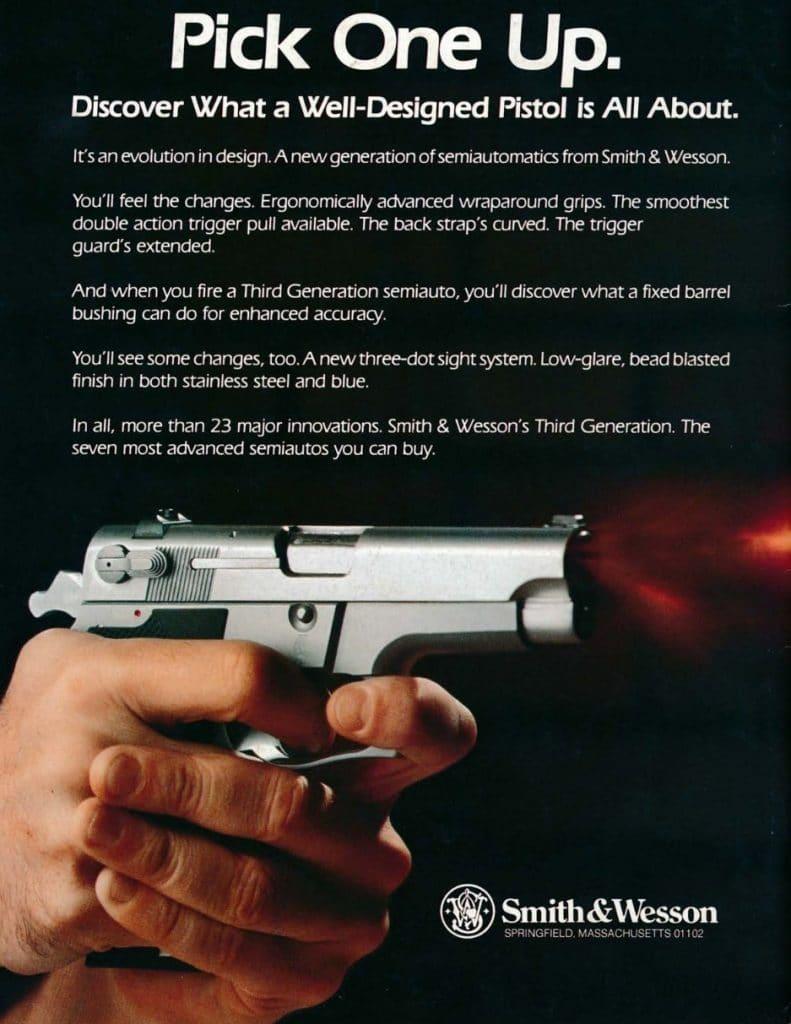
However, as firearms technology evolved and Smith lost market share to Austrian newcomer Glock, who specialized in comparatively less expensive striker-fired polymer-framed handguns, the days of the flashy, all-metal, hammer-fired Wondernine were numbered.
To compete, in 1993, Smith introduced the short-lived SD or Sigma, a gun co close to the Glock 17 in styling that it was derided as the “Swock” when it hit store shelves.
Learning from their mistakes, the company kept some things about the SD/Sigma that worked and were well-received, such as its optimal 18-degree grip angle for a natural point of aim, and developed the M&P series semi-auto pistols in 2006, with several variations in each caliber.
Much more successful than the Sigma, the M&P pistols saw steady adoption both in law enforcement use and with the public. Taking a decade of feedback, in 2017, Smith & Wesson introduced the second generation M&P M2.0 standard which tweaked almost every aspect of the original M&P.
To provide extra rigidity and reliability, the M2.0 uses an extended stainless steel chassis. For reduced muzzle rise and faster aim recovery to deliver follow-up shots, these 2nd Gen guns have a low grip-to-barrel bore axis ratio, an engineering feature that provides better control. Finally, the M2.0s have a fine-tuned crisper trigger with a tactile audible reset, as well as aggressive grip texturing and grip modularity using four easily interchangeable palm swell inserts.
While the original early M&P series included an M&P 9c (Compact) variant, which used a 3.5-inch barrel and 10 or 12 shot magazines, in addition to longer full-sized models and the sub-compact M&P Shield pistols, Smith in late 2017 dropped the kind of wonky-sized M&P 9c in favor of the slightly larger and greatly improved M2.0 Compact that we know and love today.
While the old M&P 9c was a rough match for the “Baby Glock” G26, the modern M2.0 Compact was clearly intended to take on Glock’s G19.
M&P Shield 2.0 Compact
Features
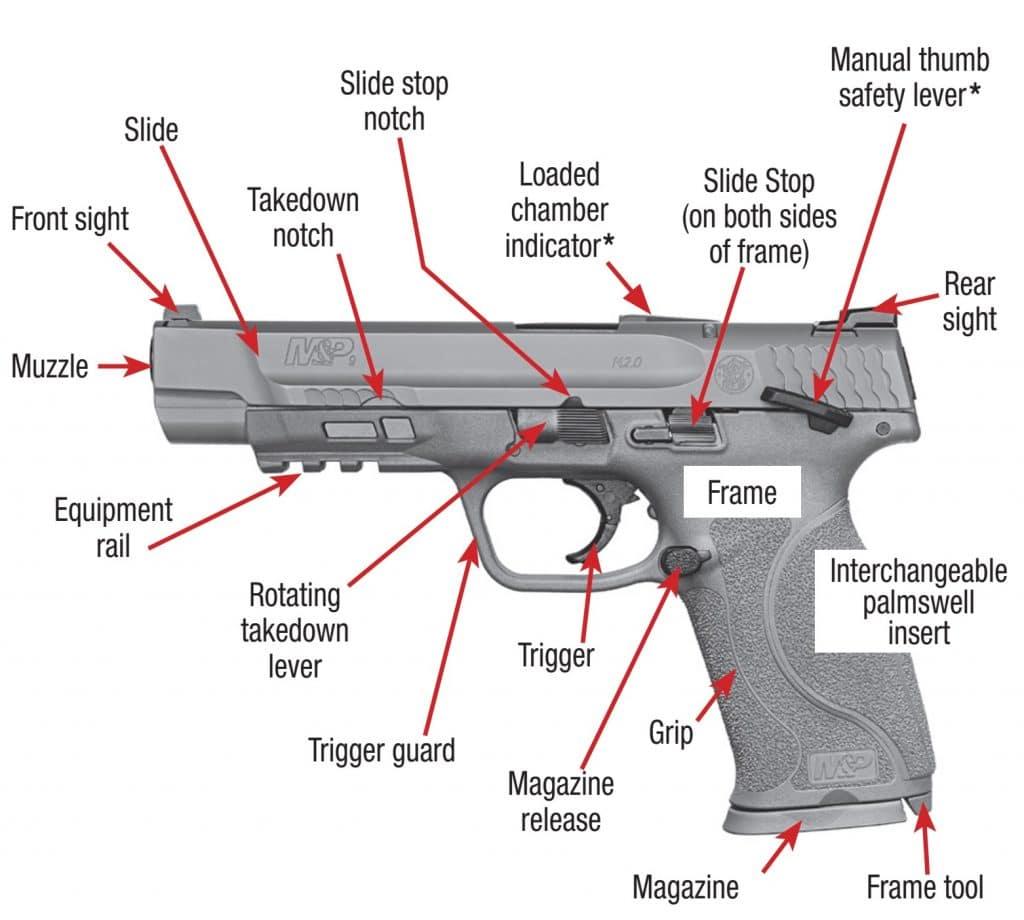
As denoted by the “M2.0” designation, the Compact is a second-generation installment in Smith & Wesson’s M&P series handguns.
This means it has an extended rigid embedded stainless steel chassis to reduce flex and torque when firing and a modular grip frame with multiple palmswell inserts to adjust to a wide range of users.
Carried over from the first-gen models is a low bore axis that makes the gun more comfortable to shoot while at the same time reducing muzzle rise allowing users to get back on target more easily.
Also standard are front and rear slide serrations, an equipment rail on the frame that accepts standard pattern pistol accessories such as weapon-mounted lights/lasers, and combat-style sights that are rugged enough to assist with one-handed emergency reloads.
Controls
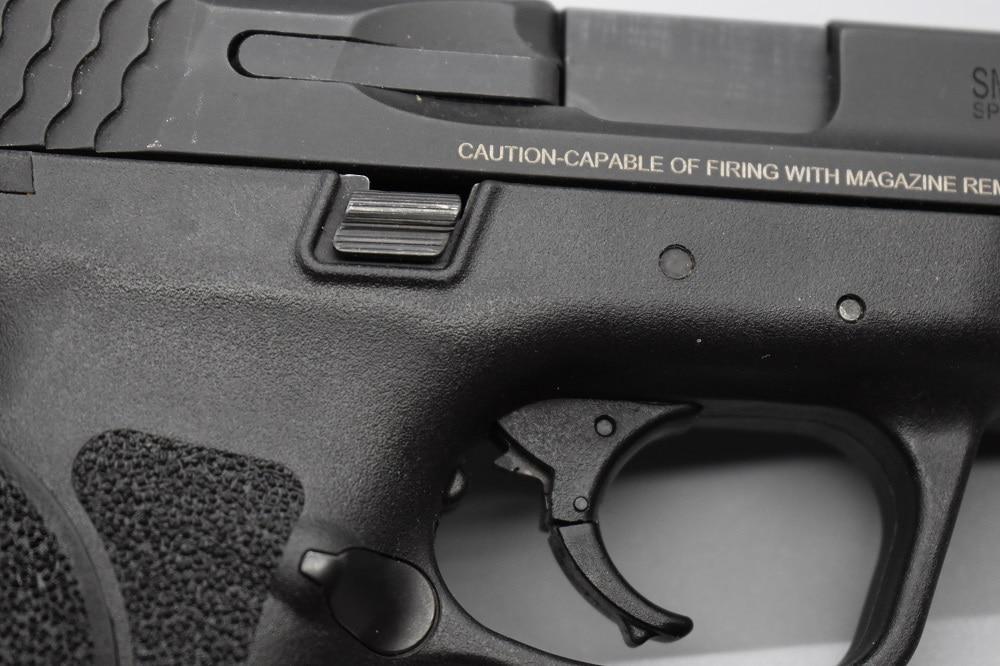
The S&W M&P M2.0 Compact is ambidextrous to a degree when it comes to surface controls. On all models, it has a fenced-in slide stop lever on both sides of the frame which allows for manipulation with either hand.
The push-button American-style magazine release button comes from the factory installed on the left-hand side of the frame, to be easily thumbed by the right hand.
However, the release can be easily swapped out to the other side of the frame at the user level with the help of a small screwdriver in about 15 minutes. The manual that comes with the pistol covers the step-by-step process of swapping the mag release as do several free videos on YouTube.
Purpose
S&W M&P M2.0 Compact fills the void in the company’s striker-fired polymer-framed category between full-sized or standard models– which are ideal for duty use, home defense, and open carry– and the smaller Shield line of pistols which are intended for use as concealed carry or backup guns.
This puts the Compact within striking distance of checking both boxes, in other words, serving as either a duty gun for law enforcement or capable of home defense, while still being short and light enough to carry concealed comfortably.
A kind of “universal” pistol, if you will, with wide appeal.
It is no mistake that the M&P M2.0 Compact is a doppelganger in size, caliber, and capacity to the Glock 19, which is usually the best-selling handgun in the country month after month.
Magazines
The M&P M2.0 Compact typically ships with two flush-fitting 15-round steel body magazines with a grey follower and a polymer baseplate.
This is notably different from the polymer-bodied mags used in Glocks.
For those trapped in or moving to magazine-restricted states (i.e., California, Connecticut, Hawaii, Maryland, Massachusetts, New Jersey, and New York), Smith markets the pistol with 10-rounders.
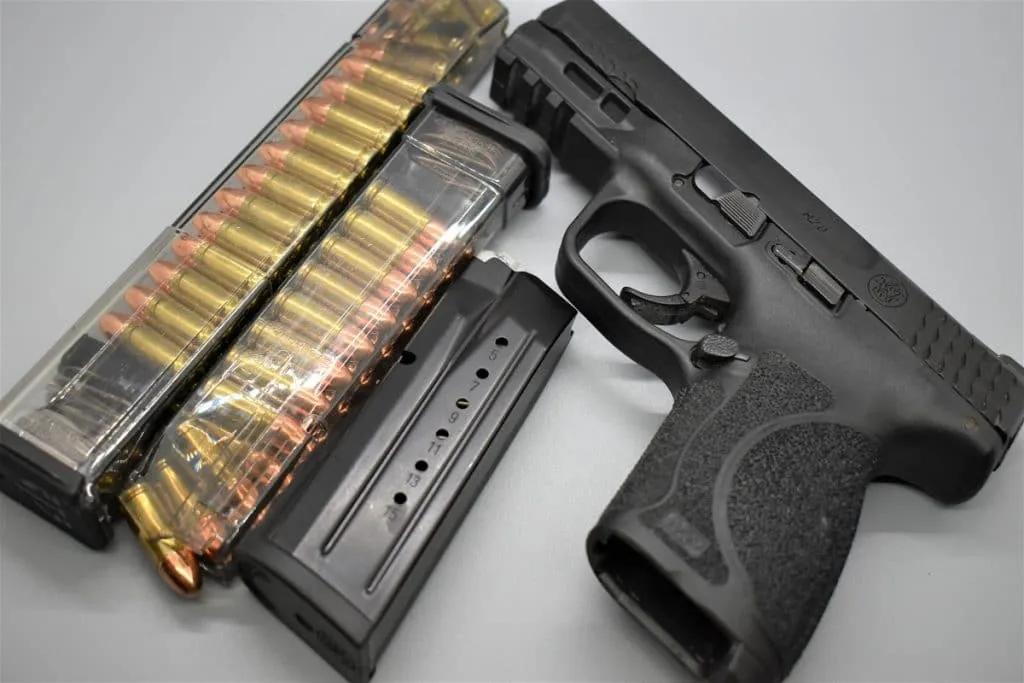
For those who want a couple of extra rounds or have a full-sized M&P9 in the safe already, the Compact will accept the 17-round mags of that larger format gun and even ships with a pair of polymer sleeves to fill the gap between that longer mag and the Compact’s shorter grip.
In testing, I found absolutely nothing to complain about in the use or maintenance of the factory S&W M&P magazines and they dropped clear when pressing the push-button mag release every time.
Speaking of which, for left-hand users, the release button is swappable in a simple process that takes about 15 minutes.
Sadly, these awesome and reliable factory mags tend to cost more than comparable Glock factory sticks, usually about $10 or $15 more on average, and, while easy to find, are nowhere near as commonly encountered.
There are a few companies making aftermarket mags, with Elite Tactical Systems Group, commonly just seen as ETS, being probably the best of the lot. ETS makes 17, 21, 30, and 40-round transparent 9mm double stacks for the S&W M&P series that are priced right, with all options usually running $25 or under.
Sights
One of the most obvious “wins” in the fight between the S&W M&P M2.0 Compact and the Glock 19 is that the Smith has steel three-dot combat style sights whereas the Austrian pistol comes with polymer U-notch-dot sights.
While it sounds petty, the fact that the Smith’s sights are durable enough to remain on the slide if the pistol is dropped or the slide is racked roughly alongside the barricade in a one-hand reload drill is a big deal.
I found our test unit to be on-target to point of aim right out of the box, but should the user encounter the need to tweak the layout, the rear sight can be tap adjusted for windage once the set screw is loosened.
While S&W only offers M2.0 Compact models with factory-installed Tritium night sights in their “Law Enforcement Only” line, dealers often sell these models to the public and the pattern is easy enough to find via aftermarket night sight makers, thus allowing upgrades at the user level for those that can’t lay hands on an LEO.
Testing
In running over 2,000 rounds through my M&P M2.0 across five range trips and three shooters, I fired everything from 115-grain to 165-grain (HUSH RN Subsonic) in bullet size and multiple profiles from Aguila, CCI, Federal, PMC, PPU, Remington, S&B, Tula, Winchester, and Wolf.
This included target, range, and self-defense loads and cases made of aluminum, brass, nickel, and steel. The result was that the S&W M&P M2.0 proved a hungry beast that could not be choked.
In short, if it is factory 9mm Luger ammo that still looks the same color as it did when it left the factory, it will probably run in the Smith.
Quality Control
Smith has been in the gun biz for going on two centuries, with the last two decades of that making polymer-framed striker-fired pistols.
They have it figured out and the customer is not the beta tester.
The fit and finish of our review M&P was even and done correctly with few things I could complain about.
While some polymer pistol makers have an issue with excess material, or flash, leftover from the molding process, Smith doesn’t fall into that trap, and everything feels smooth where it is supposed to and uniformly rough where it is supposed to be textured.
The surface controls all worked with no sticking and the all-over Armornite finish was even without strawing.
Grip & Ergonomics
The M&P series from the beginning has used an 18-degree grip angle for a more natural point of aim, and I found that this theory held up in testing.
A modular style pistol, it comes from the factory with four (S, M, ML, L) user-interchangeable palmswell grip inserts for optimal hand-fit and trigger reach.

These swap out on the fly by simply dropping the mag and clearing the chamber, removing the frame tool at the end of the magwell, lifting the grip insert and rocking in another then reinstalling the frame tool.
I found the M2.0 Compact easily controllable due to the extensive and aggressive grip texture on the frame, which extends to the palmswell inserts.
Trigger & Reset
When compared to 1st Gen M&P models, the new M&P M2.0’s factory trigger is crisp and lighter with a tactile and audible reset.
A two-piece trigger with a safety device fitted into the shoe, it has a curve to it and a little bit of a creep as a result. Smith tells us the targeted spec for the M2.0’s trigger pull is 5.5 pounds and I found that to run closer to the 5-pound mark in an average of a dozen test pulls on a digital trigger gauge.

For those who want something better, Apex offers a flat-faced drop-in aftermarket replacement.
Available in several colors for those who want to point out that they spent an extra $169 on a trigger pack, the Apex trigger is billed as reducing trigger pre-travel, over-travel, and reset distance.
Accuracy & Reliability
Between the better M2.0 trigger, an upgrade from past models, the three-dot steel sights, and the 1:10-inch twist M&P barrel, the Compact is set up for decent practical accuracy. W
e found it capable of eating out the center of a silhouette target in two-handed shooting at standard distances on a static range of 15 yards and under.
When firing from a bench or with an Olympic-style one-hand stance at 25m I was still on target even with junk bulk pack ammo.
Speaking of which, I went case-deep in testing, running well over 2,000 rounds across several range sessions through our review pistol without any failures I can pin on the gun.
I stopped halfway through to field strip and run a snake through the bore as well as to apply some more lube, and the Compact kept sewing like a machine.
As the whole top half uses Smith Armornite durable corrosion-resistant finish, marring and wear were at a minimum.
I’d recommend changing out the springs once you pass the 5K mark, but those are cheap and easy to find.
Takedown & Maintenance
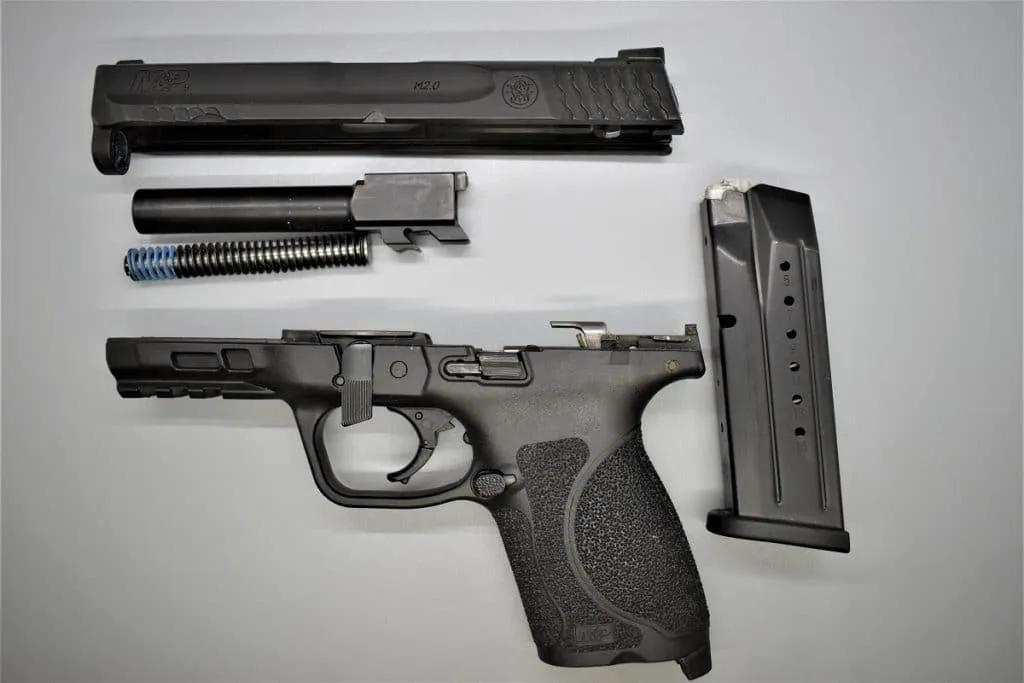
Rather than pull the trigger during the disassembly process– which is how Glocks, and many other striker-fired pistols have to be field stripped– Smith has a sear de-tensioning system built into the M&P M2.0 series.
To use it, with an unloaded pistol, remove the frame tool from the bottom of the grip, take off the palmswell backstrap, then use the tool to push down the yellow-green sear deactivation lever into a lowered position.
From there, the S&W M&P M2.0 Compact breaks down for field stripping in a way identical to popular semi-autos going back to the Walther P-38 of World War II fame. Just drop the mag, make sure the chamber is empty, lock the slide back, and rotate the frame-mounted takedown lever 90-degrees downward.
Then you can push the slide from the frame and remove the barrel and recoil assembly for cleaning.
Smith & Wesson recommends using a “single drop of high-quality firearm lubricant” at eight points in the frame and barrel to ensure it is lubricated against metal-to-metal wear.
More than that, or lube placed in other areas, can result in turning your gun into a mess and work against reliability.
Smith notes in their manual on the handgun that “Excess lubricant can collect quantities of unburned powder and carbon residue, which could interfere with the proper functioning of the pistol.”
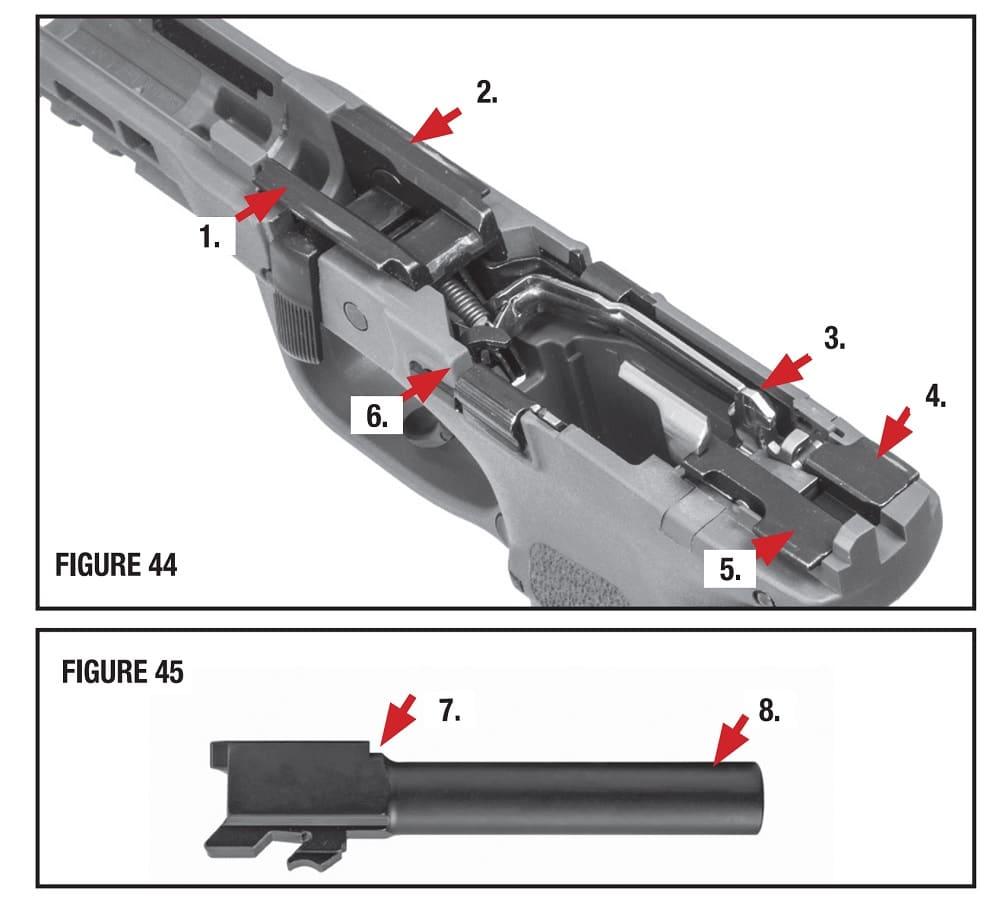
Reassembly is roughly in reverse but without having to recock the sear– simply reinstalling the top half of the pistol will take care of that.
Variants
Smith & Wesson in its latest catalog has at least 23 different variants of the M&P M2.0 Compact cataloged.
Most differences in these variants come from state-compliant (example given, Massachusetts) models with restricted magazines, and in variants with optional frame-mounted manual thumb safeties installed.

Moving beyond that, Smith makes the pistol in both black and flat dark earth (FDE) models, and models with a threaded barrel intended for easy use with suppressors.
The company also offers an even more compact version of the M2.0 Compact, which features a 3.6-inch barrel rather than the standard 4-inch model.
While just under a half-inch shorter, for many, it makes a gun that is easier to conceal and rides better on everyday carry.

Sadly, while S&W’s CORE series of Performance Center M&P variants– with a tuned trigger pack and factory optics cut on the slide to accommodate micro red dot sights– are available in full-size and longslide M2.0s, they do not currently offer the same package for the Compact.
There is a “Law Enforcement Only” model that comes with Tritium night sights and a slide cut, however, and, despite its name can often be had at S&W dealers.
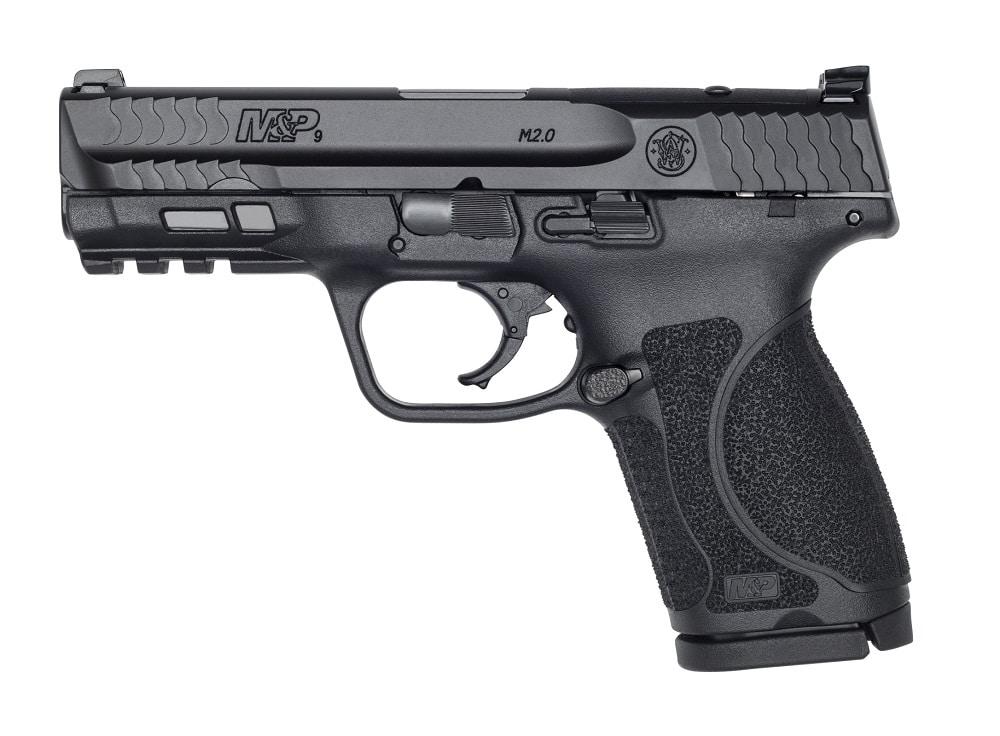
How it stacks against the Glock 19
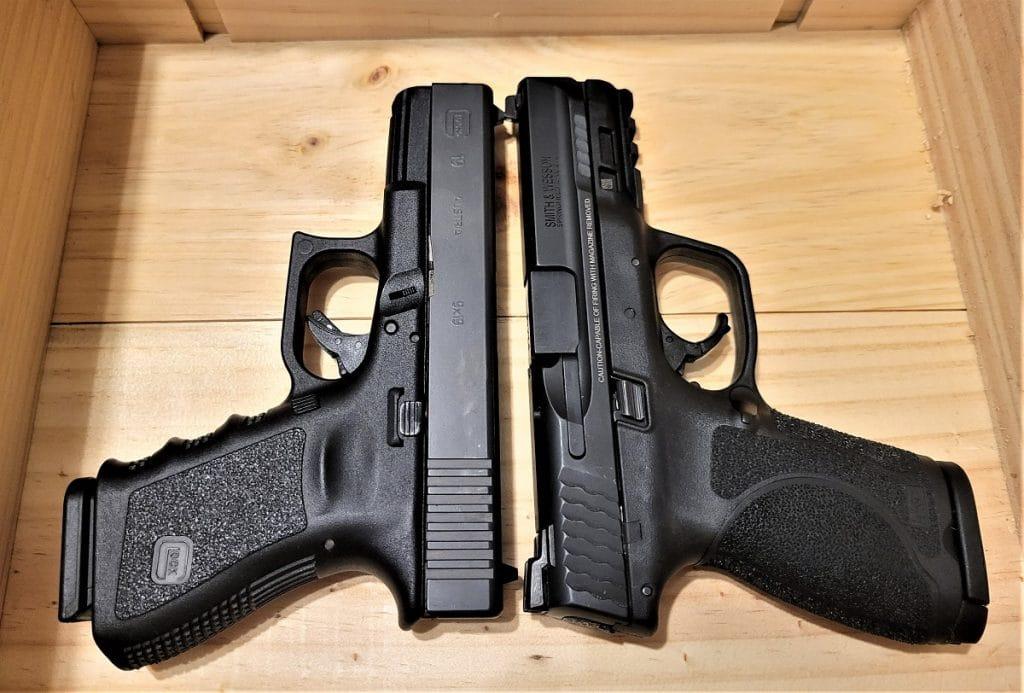
The polymer-framed, striker-fired Glock 19 hit the market in 1988, at a time when S&W was still selling thousands of their more traditional all-metal, hammer-fired Wondernines.
While Glock had enough feedback and experience with their designs to have their 3rd Generation models on the shelf for several years by the time S&W got into the polymer game with the original M&P series, it wasn’t until the M2.0 Compact was released in 2017– at which point Glock was on their 5th Generation of guns– that Smith had a pistol that was dimensionally a dead ringer for the G19. In terms of height, weight, width, and length, the S&W M&P M2.0 Compact and the Glock 19 are fundamentally the same.
They also share a standard 15+1 shot capacity and have an accessory rail to accept lights and lasers. Both guns have a trigger shoe insert that serves as a safety device to help prevent accidental discharges.
The Smith compact one-ups the well-known Glock in a few ways. It has much better steel sights that are adjustable which are far and away superior to the easily-mutilated fixed plastic sights on the Glock.
The American-made 9mm also has, in my opinion, much more aggressive grip texturing besides the fact that it ships with four interchangeable palmswell grip inserts compared to the 5th Gen Glock’s standard two extra beavertail backstraps, winning the ergonomics fight.
In my opinion, the S&W M&P M2.0’s factory trigger is crisper than the comparable Glock trigger.
Meanwhile, the Glock 19, likely by nature of it being around for more than 30 years whereas the M2.0 Compact wasn’t a thing until 2017, has an ocean of aftermarket accessories to include sights, magazines, triggers, and holsters against the Smith’s much smaller pool of support to draw on.
Shortcomings
While it is easy to throw rocks in the gun community, it is hard to find something to aim one at on the S&W M&P M2.0 Compact.
As I have addressed already, it doesn’t have the same tsunami of aftermarket parts and accessories that the Glock 19 can skim from. It also means you might pay more for S&W parts.
For instance, while OEM factory Glock 19 mags can often be had for around $25-$30 with generic imports from overseas hitting half that amount, S&W-branded M&P M2.0 Compact mags run closer to $40 with fewer aftermarket offerings to fill that void.
One could also argue that, with guns like the new S&W M&P Shield Plus, which ships with a 13+1 extended 9mm magazine that is only two rounds less than the M2.0 Compact while being slightly slimmer, shorter, and lighter– thus making it more easily concealable– than the Compact may be obsolete from a size vs capacity frame of mind.
About the worst thing I can say is that fans of hammer-fired metal-framed DA/SA handguns, like the elder school S&W Wondernines for instance, won’t like the M2.0 out of hand, but to be sure, this gun was meant to be completely different so that is an obvious strawman argument.
Sign up for our newsletter
Get discounts from top brands and our latest reviews!




